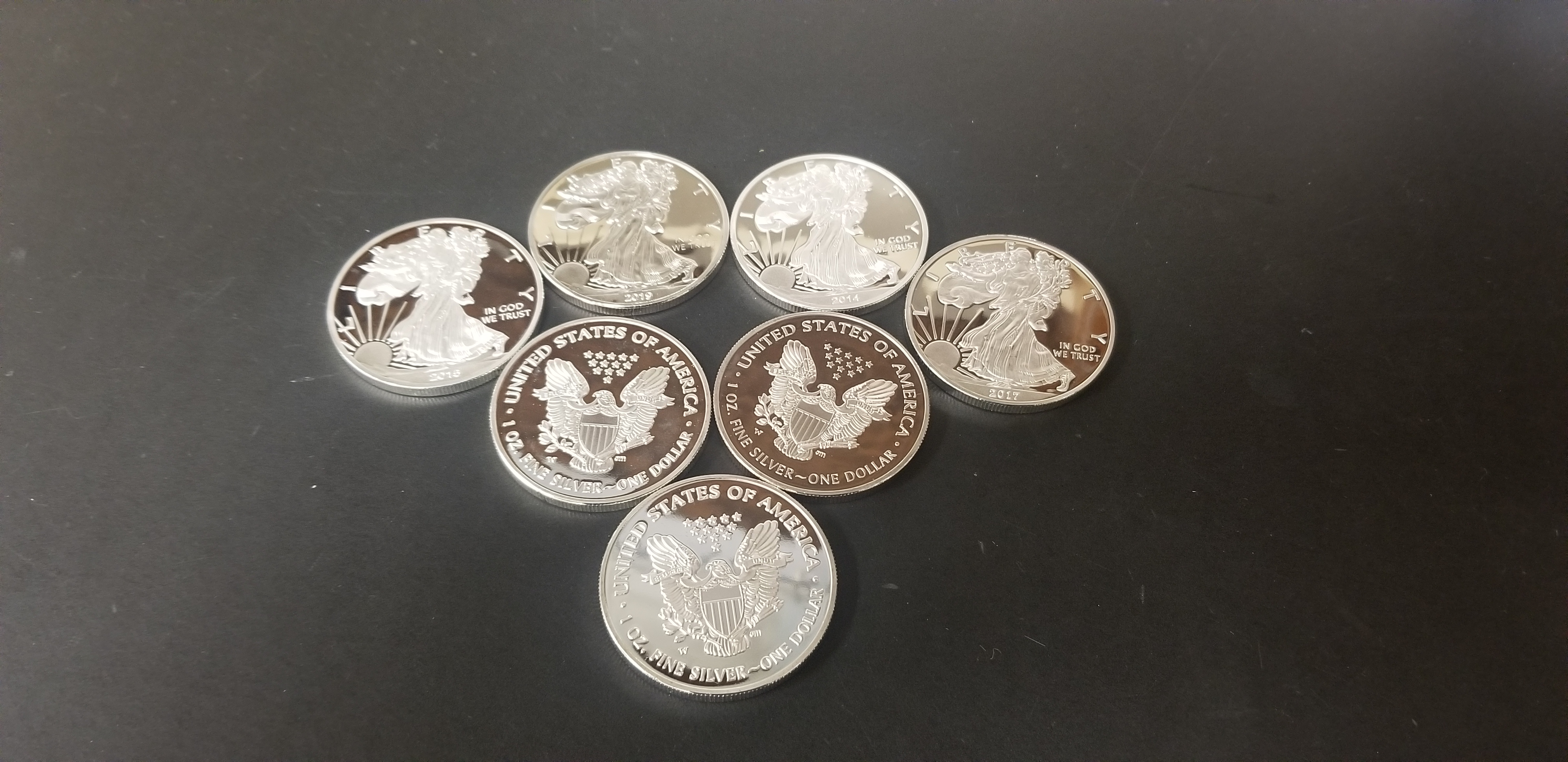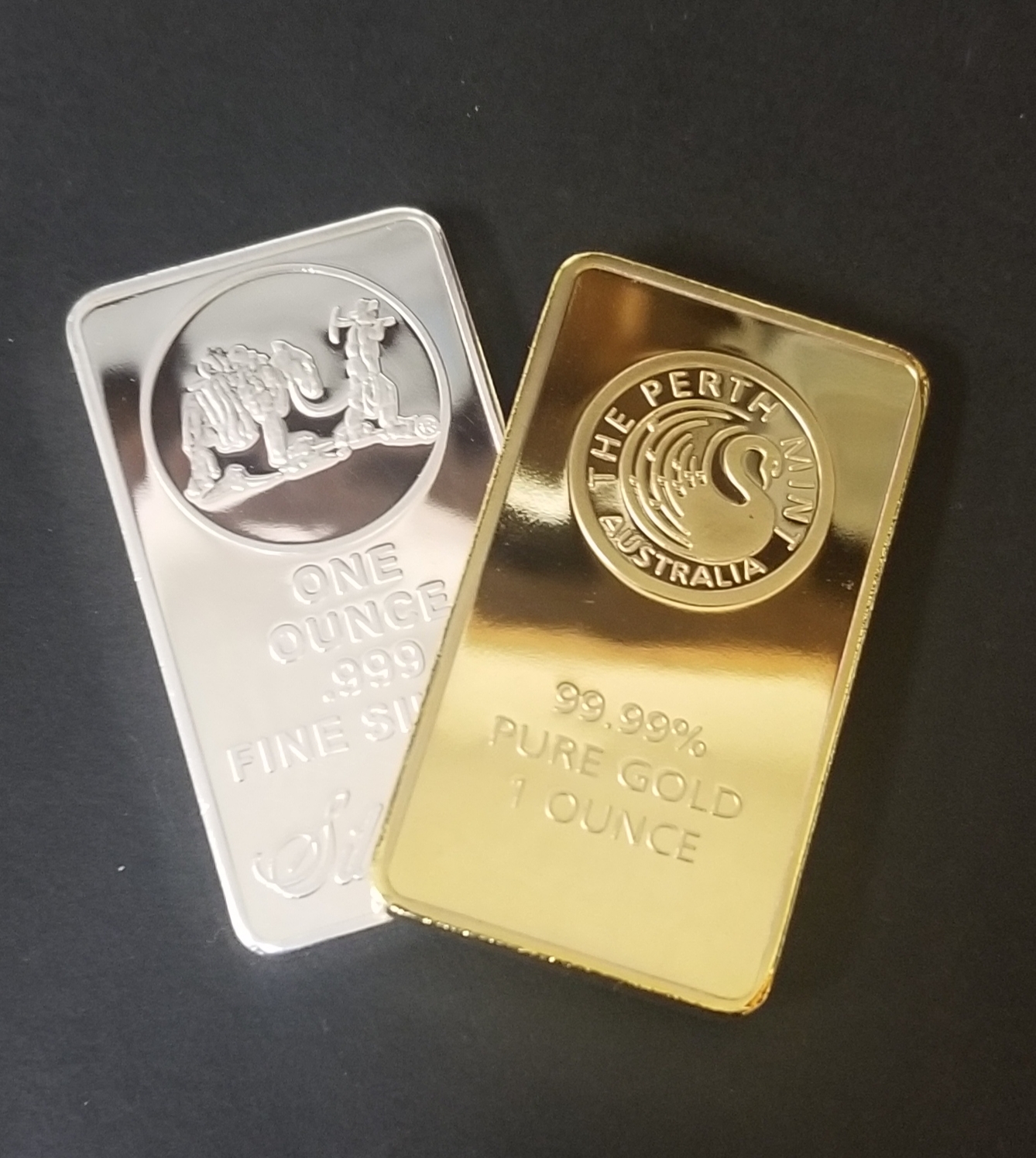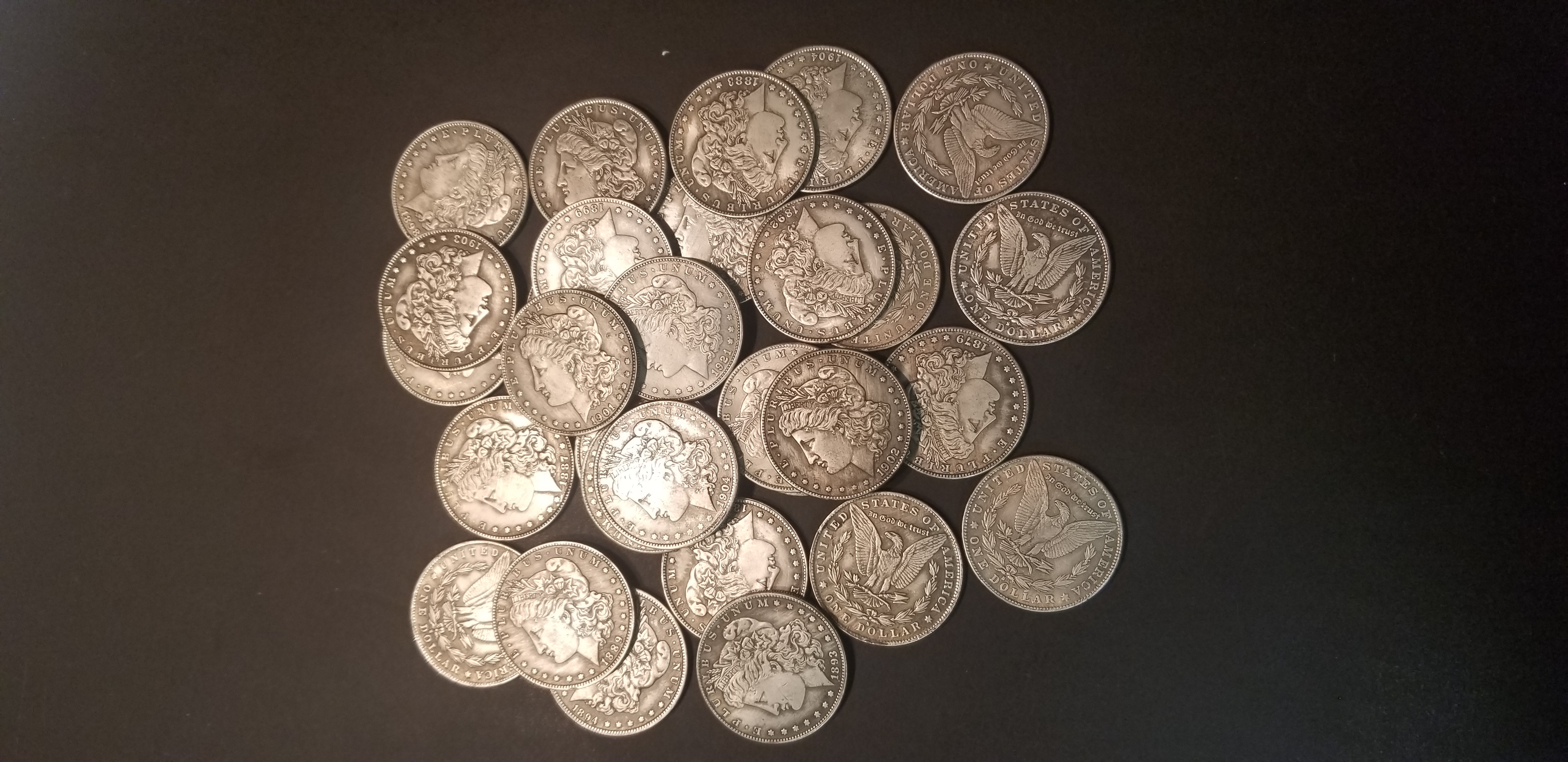I bought COUNTERFEIT Silver and Gold so you don't have to
Posted by Toby Adkins, Numismatic Scholar on Mar 26th 2020
I'm sure all of you are now aware, the U.S.Mint is changing the reverse of the popular silver and gold Eagles in 2021. I'm not surprised they are making the changes on an anniversary year but the main reason for the changes is to fight the growing counterfeiting of U.S. coins. I recently purchased some counterfeit gold and silver bars as well as coins. It won't come as a shock but all of them were produced and sent from China. We'll learn what to look for and some easy ways for you to be able to determine if what you have is the real deal. Let's take a look and learn some diagnostics on the "gold" and "silver" bars and coins I received.
Some of these items were fairly well done and others immediately screamed "something isn't right here!" Naturally, the more familiarity you have with coins, the less likely it is to be caught off guard by a counterfeit. A good example of this are the Silver Eagle "replicas" pictured below. Since Silver Eagles are the most popular coin in the world, I think less people would think these are the real deal. When observed closely, the detail of the replicas was far less than than that of a real Proof Silver Eagle. It was obvious in the dress of Lady Liberty and very obvious in the lack of feather details on the eagle's wings. If you have some Silver Eagles, it's doubtful these would fool you. That being said, my wife who is not a collector, thought they were "beautiful." So, what is the best way to check if you are not sure if you are looking at a real or counterfeit coin? There are several ways, methods, and diagnostics we use when checking for counterfeits. Everything from density tests, nitric acid tests, to rub tests that would actually damage a real coin. Below is the 3 easiest ways to test for counterfeit silver and gold.

Top 3 Easiest Ways to Test for a Counterfeit
1. Check it with a magnet
Most counterfeits are made from something other than precious metals. Since precious metals are not magnetic, a magnet will not stick to them. But remember, it also won't stick to pewter, tungsten, brass or copper! And not to mention, there are plated counterfeits out there with the intention of keeping it from being magnetic. However, if your new shiny bauble sticks to the magnet... you've been had.
2. Listen for the "ping"
Gold and silver has it's own sound or ring. If you have a real coin, you can compare it and see if it has the same tone. If you gently drop on a hard surface like glass or granite, you will hear the tone of the metal, the ping. If you know this sound, it's hard to fake. If you're totally tone deaf, you may want to move on! That being said you can even download apps for smart phones that will "listen" to help you determine the sound.
3. Check the weight and size
This only takes some homework and a small amount of effort. Once you know the dimensions of the real items, you can compare it to anything that looks fishy to you. Since each metal has a specific weight, this is a difficult area to counterfeit. When measuring weight, grams is the best way since coins are typically made in troy ounces instead of standard ounces. On a side note, all of the counterfeits I purchased failed this test!
So how do we protect ourselves from having this happen?

Top 3 Ways to NOT be tricked!
1. Experience
The more coins you are around and the more knowledge you have, the more difficult it is to be hoodwinked. Back to the fake Proof Silver Eagles above. To any normal collector, it is obvious that something is off. Most of us here new immediately the proofs were wrong without even picking one up. The detail and luster were just not right and were a dead giveaway. If you have a way to compare it to a coin you know is real, it can be a big help if you're unsure.
2. Buy Certified Coins
Numismatic Guaranty Corporation (NGC) and Professional Coin Grading Service (PCGS) are the best third party grading services for a reason. They certainly do their due diligence on making sure counterfeits are not certified and are trustworthy in their efforts. Over the years, their holders have also been counterfeited but since each certified coin has it's own serial number, it really helps deter the criminal element.
3. Buy from a Trusted Dealer
This may seem self serving but it is truly your best line of defense. Any reputable dealer stands behind their products. If they don't, run, don't walk! Reputable dealers also check for counterfeits because no one wants to deal with sending out a counterfeit product. Not only do we not want to send out fakes but we certainly have no intention of losing money when we buy them either. It helps no one.
SO... if I had to wrap this up into one sentence, it would be the old cliche we have all heard: If it looks too good to be true, it probably is!
Happy collecting!


